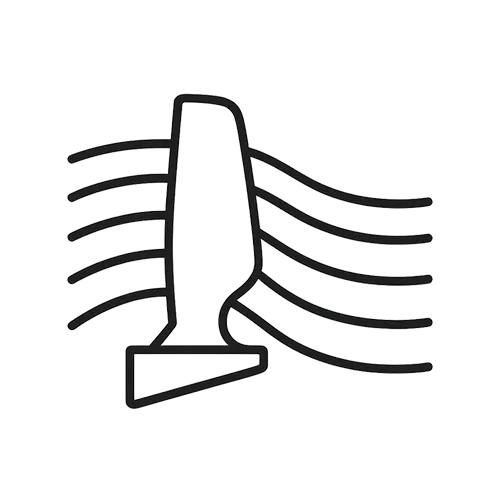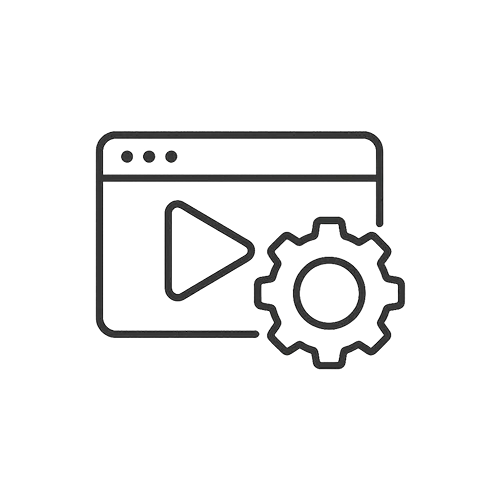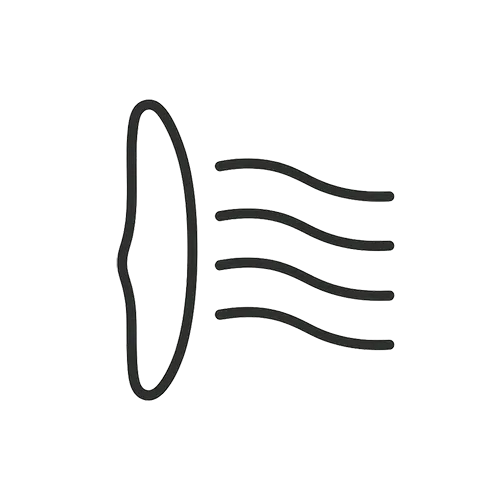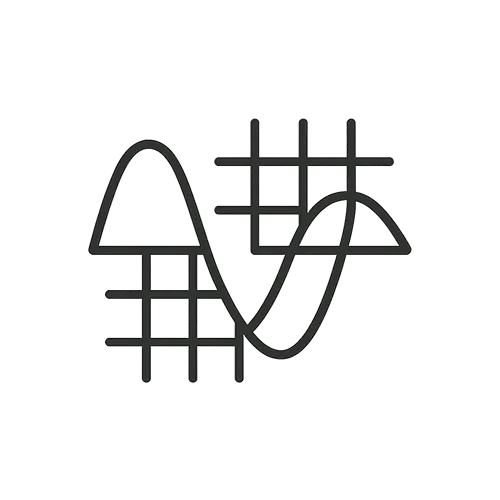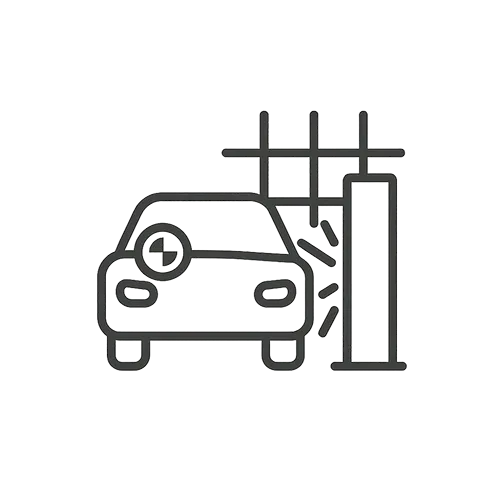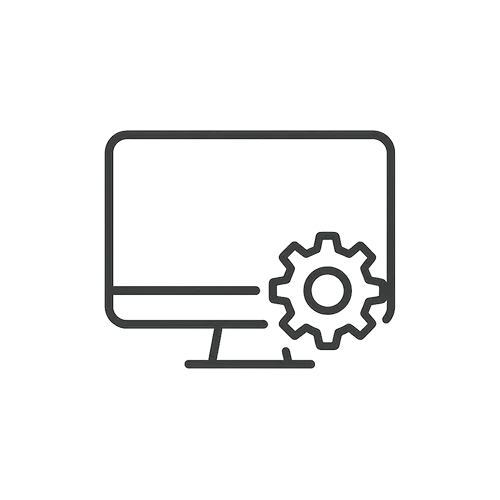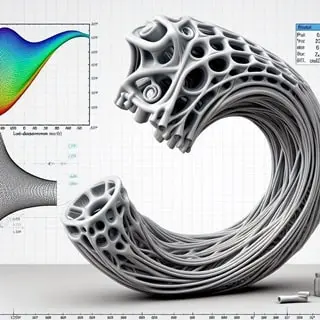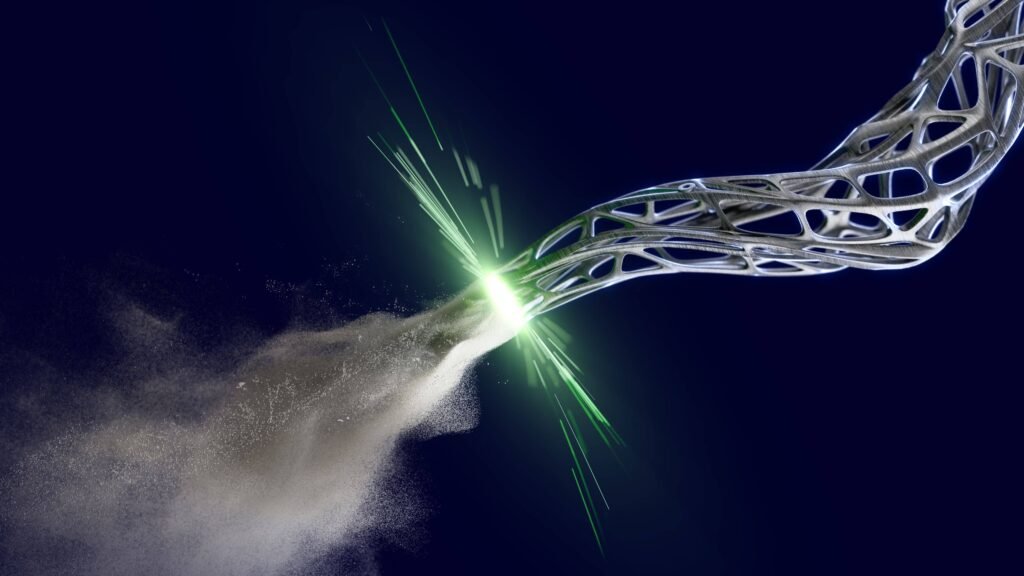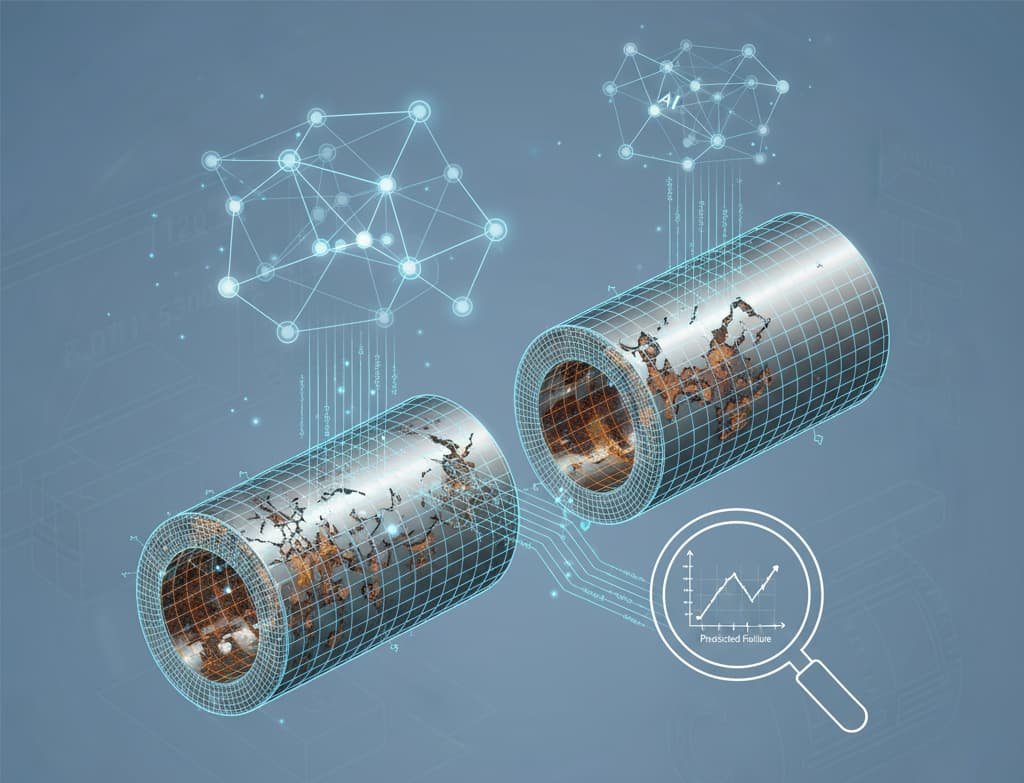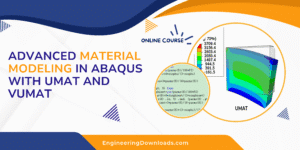Introduction
In our previous blog, we delved into the fascinating world of plastic behavior models, focusing on their application to metals and general materials. Now, get ready to take your understanding to the next level as we turn our attention to specialized plasticity models specifically designed to capture the intricate behavior of engineering materials.
Plastic models in Abaqus
In ABAQUS, various material models are available to describe the plastic behavior of materials. Here is a list that explains commonly used material models to describe the plastic behavior in Specialized Plasticity Models for Engineering Materials .
Cast Iron Plasticity Model:
The cast iron plasticity constitutive model simulates the elastoplastic characteristics of gray cast iron. Compared to most metals, gray cast iron exhibits greater brittleness when subjected to tension. The microstructure, which consists of graphite flakes distributed within a steel matrix, attributes the brittleness of the material. In tension, the graphite flakes act as stress concentrators, resulting in an overall reduction in mechanical properties, including yield strength. However, when the material undergoes compression, the graphite flakes effectively transmit stresses, and the steel matrix primarily governs the material’s response.
Several macroscopic properties reflect these differences: (i) tension and compression exhibit distinct yield strengths, with the yield strength in compression being three times or more higher than in tension; (ii) tension results in significant inelastic volume change, while compression exhibits minimal or negligible inelastic volume change; and (iii) tension and compression demonstrate contrasting hardening behavior. While a Mises-type yield condition along with an associated flow rule provides an accurate model for compressive loading conditions, it is inadequate for capturing the brittle behavior of the material in tension. To accurately represent tension-induced brittleness, researchers require a pressure-dependent yield surface with non-associated flow. The subsequent sections elaborate on the details of the model. The model utilizes a composite yield surface to distinguish between tension and compression behaviors. When subjected to tension, the maximum principal stress is believed to control yielding. On the other hand, when experiencing compression, deviatoric stresses are assumed to govern yielding independently of pressure. In principal stress space, the composite yield surface comprises of the Rankine cube for tension and the Mises cylinder for compression.

Cast Iron stress-strain curve
It should be noted that, in defining the value of plastic Poisson’s ratio, νpl, where -1< νpl≤0.5. (Dimensionless.) If no value is provided, a default value of 0.04 in assumed.
Clay Plasticity Model
Introduction
Clay plasticity in ABAQUS refers to the modeling of the mechanical behavior of clay soils. Clay soils exhibit unique characteristics, such as high compressibility, time-dependent behavior, and sensitivity to moisture content. The clay plasticity model implemented in ABAQUS/Standard captures the non-elastic behavior of clay materials. It utilizes a yield function based on three stress invariants, defines the plastic strain rate using an associated flow assumption, and incorporates a strain hardening theory that alters the size of the yield surface based on the inelastic volumetric strain. To accurately represent the material’s behavior, the model requires performing the description of elastic deformation using either the linear elastic material model or the porous elastic material model within the same material definition.
In ABAQUS, you can model clay plasticity using constitutive models that capture the complex behavior of the soil. Examples of usages for clay plasticity in ABAQUS include:
- Geotechnical Analysis: In geotechnical engineering projects, ABAQUS can simulate the behavior of clay soils, including slope stability analysis, embankment construction, or deep excavations. The clay plasticity model helps predict the soil’s response to loading and deformation over time.
- Tunneling and Underground Structures: To ensure the stability of the tunnel, it is necessary to accurately predict the behavior of the soil when tunneling through clay soils. One can use ABAQUS with clay plasticity modeling to analyze the impact of tunneling on the surrounding clay soil and assess the potential for ground settlement or tunnel deformation.
- Earthquake Engineering: Clay soils can significantly influence the response of structures during earthquakes. ABAQUS can simulate seismic loading on structures founded on clay deposits, considering the nonlinear behavior of the soil due to clay plasticity. This helps in evaluating the structure’s performance and designing appropriate mitigation measures.
Parameters
In the context of the Clay plasticity model in ABAQUS, the following terms refer to specific parameters:
- “Long plas bulk mod” (Longitudinal plastic bulk modulus): It represents the bulk modulus associated with volumetric plastic deformation. It quantifies the resistance of the material to changes in volume during plastic deformation.
- “Stress ratio”: This term denotes the ratio of the deviatoric stress (shearing stress) to the mean stress (hydrostatic stress) in the material. It characterizes the stress state and determines the plastic behavior. It influences the shape of the yield surface in the plane of principal deviatoric stresses.
- “Init Yld surf size” (Initial yield surface size): It refers to the size or shape of the initial yield surface. The yield surface represents the boundary between elastic and plastic behavior. The initial yield surface size determines the initial plastic behavior of the material. The initial value of the hardening parameter and the amount of inelastic volume change determine it.
- “Wet Yld surf size” (Wetting yield surface size): It describes the change in size or shape of the yield surface due to the influence of the inelastic volumetric strain. Wetting refers to the enlargement or contraction of the yield surface based on the volumetric strain.
- “Flow stress ratio”: It represents the ratio of the effective stress (deviatoric stress) to the yield stress (the stress required to initiate plastic deformation). We use the flow stress ratio to determine the rate of plastic strain during deformation.
Clay yield surface

The Clay plasticity model is based on a yield surface, where we use various stress measures to characterize the material behavior.
The equivalent pressure stress represents the bulk behavior

The deviatoric stress measure captures the shearing behavior

The Mises equivalent stress

and the third stress invariant

are also important in defining the model.
A constant, “M,” determines the critical state line, which controls the slope of the line. On the “dry” side of the line (t>Mp), a constant, “β,” is equal to 1.0. However, on the “wet” side, β can be different from 1.0, resulting in a modified ellipse on the yield surface (Clay plasticity diagram). A smaller β value leads to a tighter “cap” on the wet side of the critical state line.
“a” represents the size of the yield surface in the Clay plasticity diagram, and the ratio “K” determines the shape of the yield surface in the plane of principal deviatoric stresses. ABAQUS/Standard requires that 0.778 < K < 1.0 to maintain a convex yield surface (Below figure).

Clay plasticity model suboptions
Compressive Clay Hardening:
- In the clay plasticity model, compressive clay hardening refers to how the material’s yield behavior changes under hydrostatic compression, meaning when the material experiences equal pressure from all directions.
- It defines the yield stress in hydrostatic compression as a function of volumetric plastic strain.
- The hardening law can define itself using a piecewise linear form or an exponential form.
- Essentially, it captures how the material becomes stiffer or more resistant to further deformation as it experiences compression.
Tensile Clay Hardening:
- Tensile clay hardening pertains to the material’s response under hydrostatic tension (pulling apart).
- It involves defining the yield stress in hydrostatic tension as a function of volumetric plastic strain.
- Similar to compressive hardening, one can model it using piecewise linear or exponential forms.
- This aspect accounts for the material’s behavior when subjected to tensile forces.
Potential (Hill’s Potential)
- The Hill’s potential is a critical component of the yield function in the clay plasticity model.
- It plays a role in determining the shape of the yield surface.
- The yield surface is defined by stress invariants and deviatoric stress measures, and the Hill’s potential contributes to its overall geometry.
Softening Regularization:
- Softening regularization is an optional feature that users can employ to mitigate mesh dependence in situations where the material exhibits strain localization, such as necking or localized failure, during plastic deformation.
- When strain localization occurs, the finite element mesh can become problematic.
- The regularization scheme adjusts the material properties to prevent excessive mesh sensitivity.
- It helps maintain stability and accuracy in simulations involving clay-like materials.
Hardening
The hardening law can have an exponential form or a piecewise linear form.
Exponential form
The hardening law in exponential form is specific to the porous elastic material model. It is based on certain parameters related to porous elasticity. The size of the yield surface is influenced by the initial value of the hardening parameter, denoted as “a0,” and the extent of inelastic volume change. The equation describes the relationship between these factors.

Where Jpl is the inelastic volume change (that part of J, the ratio of current volume to initial volume, attributable to inelastic deformation); κ(θ,fi) is the logarithmic bulk modulus of the material defined for the porous elastic material behavior; λ(θ,fi) is the logarithmic hardening constant defined for the clay plasticity material behavior; and e0 is the user-defined initial void ratio.
Piecewise linear form
If the piecewise linear form of the hardening rule is used, the user-defined relationship relates the yield stress in hydrostatic compression,pc , to the corresponding volumetric plastic strain, εvolpl :


The evolution parameter, a, is then given by a= pc/(1+β)
The volumetric plastic strain axis has an arbitrary starting point: εvolpl |0 represents the initial state of the material, determining the initial hydrostatic pressure pc |0 and the resulting size of the initial yield surface a0. This connection is defined in tabular format as clay hardening data. The defined range of values for pc should be wide enough to cover all equivalent pressure stresses encountered by the material during the analysis. This particular form of the hardening law is compatible with both the linear elastic and porous elastic material models.
Crushable Foam
The crushable foam plasticity model enables the simulation of the behavior of compressible foam materials that undergo permanent deformation, such as energy absorption structures or balsa wood. It is implemented in Abaqus as a material option that must be used with the linear elastic material model. The model assumes that the yield surface is a Mises circle in the deviatoric stress plane and an ellipse in the meridional (p-q) stress plane, where p is the hydrostatic pressure and q is the Mises equivalent stress. The model has two hardening options: volumetric hardening and isotropic hardening.
Volumetric Hardening

The volumetric hardening option assumes that the material actively controls the evolution of the yield surface based on the amount of volumetric compacting plastic strain it experiences. The yield surface for the volumetric hardening model is defined as:

The evolution of the yield surface in the volumetric hardening model follows a consistent pattern (constant alpha). The shape factor, which determines the shape of the yield surface, can be determined by considering the initial yield stress of the material in uniaxial compression (σc0), the initial yield stress in hydrostatic compression (pc0), and the yield strength in hydrostatic tension (pt).

- k=(σc0)/(pc0 ), yield stress ratio for compression loading; 0<k<3. Enter the ratio of initial yield stress in uniaxial compression to initial yield stress in hydrostatic compression.
- kt=pt/(pc0 ), yield stress ratio for hydrostatic loading; kt≥0. Enter the ratio of yield stress in hydrostatic tension to initial yield stress in hydrostatic compression, given as a positive value. The default value is 1.0.
Isotropic Hardening

The isotropic hardening option assumes that the yield surface evolves in a geometrically self-similar manner, meaning that it has the same shape but different size at different plastic strain levels. The center of the yield surface is at the origin of the p-q plane and its size depends on a hardening parameter, denoted by k. The hardening parameter is a function of the equivalent plastic strain, which can be specified by a hardening curve. The yield surface equation for this option is:

The yield surface corresponds to the Mises circle in the plane of deviatoric stress. The diagram below illustrates the shape of the yield surface in the plane of meridional stress. To calculate the shape factor (α), one can use the initial yield stress in uniaxial compression (σc0) and the initial yield stress in hydrostatic compression (pc0, the initial value of pc) with the given equation.

- k=(σc0)/(pc0 ), yield stress ratio for compression loading; 0≤k<3. Enter the ratio of initial yield stress in uniaxial compression to initial yield stress in hydrostatic compression.
- νp, plastic Poisson’s ratio; -1<νp≤0.5.
* The compressive yield stress ratio (k) and hydrostatic yield stress ratio (kt) are two parameters that can be used to characterize the shape of the yield ellipse.
Conclusion
In summary, Plastic behavior models are crucial in ABAQUS for precise analysis and prediction of material response to mechanical loads. By incorporating models like isotropic and kinematic hardening, nonlinear plasticity, and failure criteria, engineers can simulate intricate deformation and failure processes. By incorporating factors like strain hardening and strain rate effects, ABAQUS enhances the realism and reliability of simulations.

